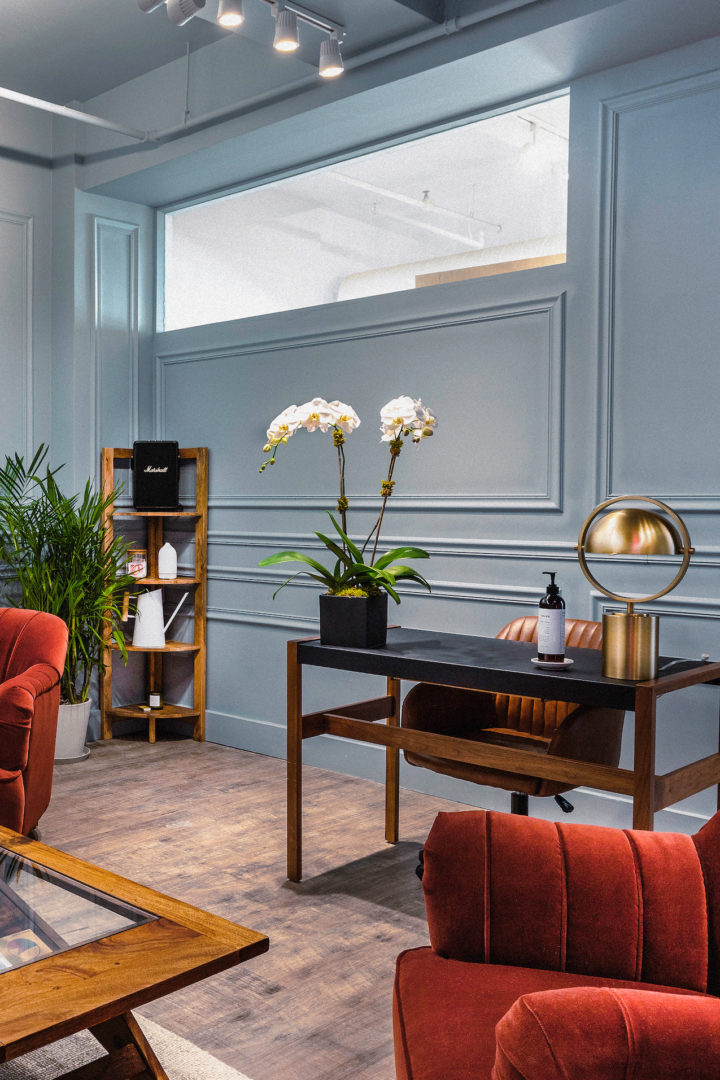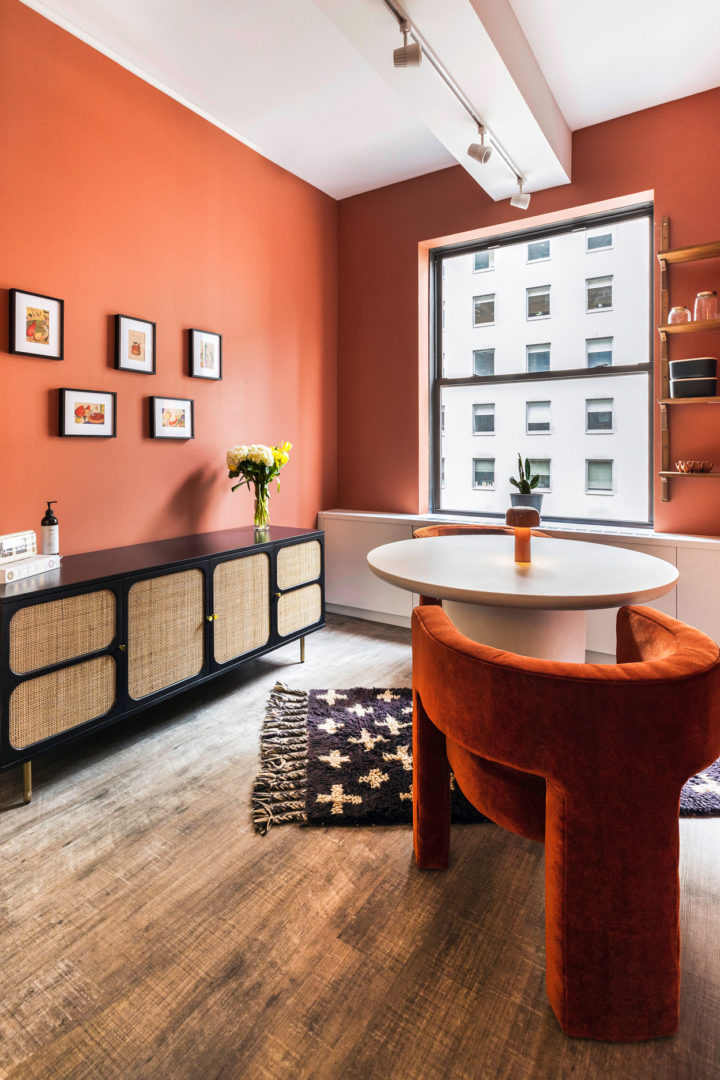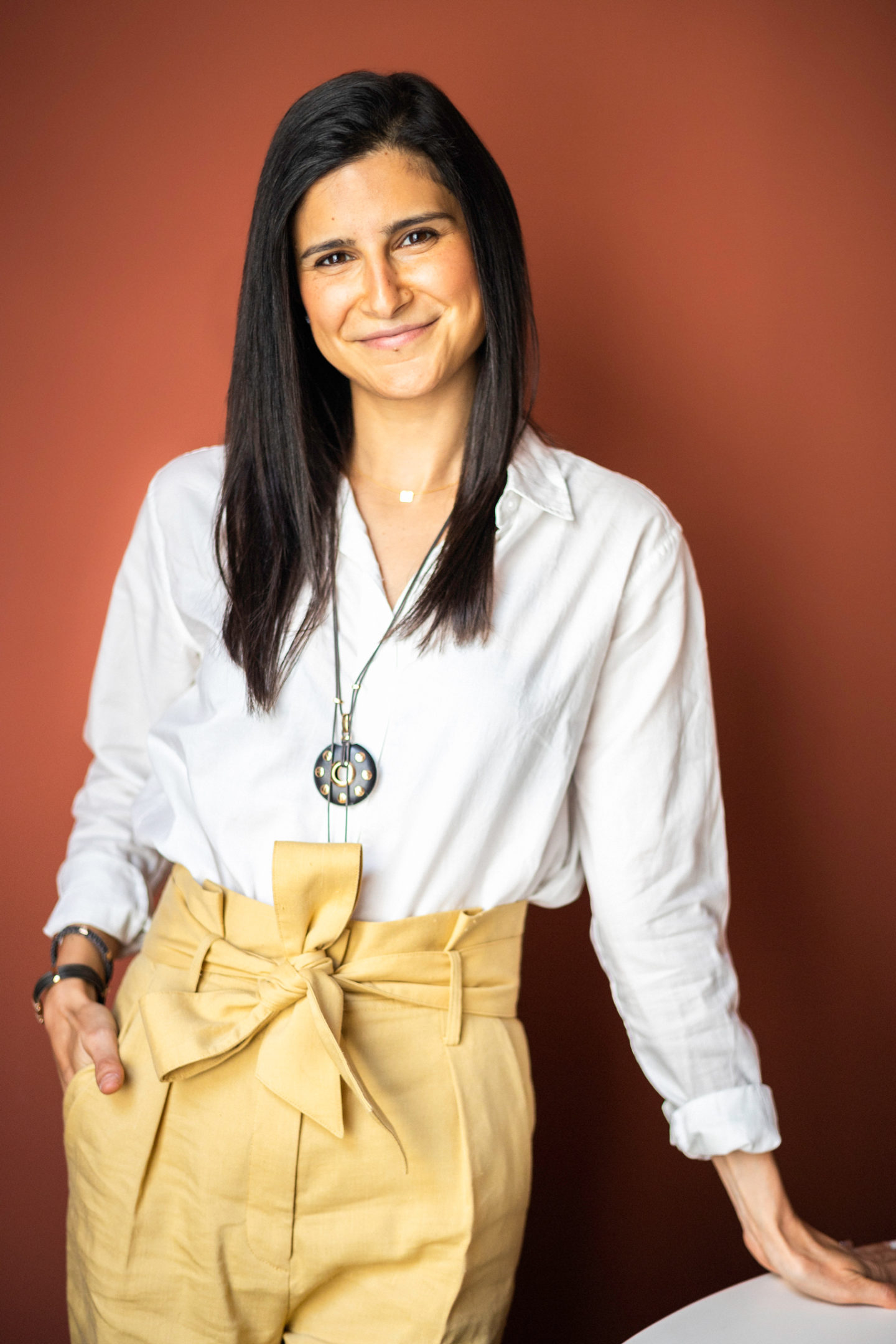At the age of 23, Chloe Harrouche discovered she had been undiagnosed with cancer for almost a year. After experiencing the bureaucratic clusterf*ck of our country’s healthcare system, she went on to beat cancer and her harrowing frustrations led her to open The Lanby, a primary care membership and community that prioritizes a patient’s needs from all perspectives of healthcare.
We sat down with Chloe, now mama of a delicious four-month-old boy via surrogate (more on that later), to discuss how her diagnosis led her to founding The Lanby and what so many women don’t realize about their own healthcare and fertility journey.

Photos courtesy of The Lanby

What led you to starting The Lanby?
I’ve always been in the healthcare industry professionally, and I’ve always been fascinated by medicine and loved being around doctors. When I was diagnosed with breast cancer at age 23, I actually enjoyed the process going from one doctor to the next. I was able to experience first hand what it felt like to go through chemotherapy. Of course I had heard about it, but it felt like some experiment.
One thing that caught my attention though was just how disjointed the healthcare system was. Obviously from my own work, I knew this to some extent, specifically from the provider perspective. But as a patient, I was struck by the lack of coordination among my providers. It was up to me, as the patient, to connect the dots, ask the right questions, be my own quarterback. In the face of a diagnosis, you’re forced to to stop everything you’re doing and fight your way through the system. It’s a nightmare.
Since completing treatment, I’ve become fascinated by preventive health and strive to be as proactive as possible. Why wouldn’t I do everything in my power to avoid a recurrence or any type of disease? But this is another area where the healthcare system, designed to be reactionary, falls short. None of my doctors spoke to me about what my lifestyle should look like moving forward. It was up to me to figure out how to optimize and then execute. And that’s where things can get dangerous. We, as motivated patients, resort to the internet and the wellness industry to supplement what we wish our doctors would tell us. We end up self-experimenting according to what we hear has worked for others (intermittent fasting, keto, IV therapy, HRT), who don’t necessarily share the same medical history, risks or goals. And then hope we don’t do any harm to ourselves in the process.
So my co-founder and I set out to redesign primary care, from scratch — we set out to disrupt the archaic, ugly, incomplete experience of primary care and reclaim it as a meaningful first line of defense. Our goal was to rethink every touchpoint from the patient’s POV. What does it really take to improve your day to day habits and make meaningful progress? How can we alleviate the administrative burden on patients — the coordination of specialists, the confusion around insurance reimbursements, and the diligence it takes to vet wellness modalities through a rigorous, science-backed lens? In essence, that’s the mission of The Lanby – how can we support patients from all angles?
How does the membership work?
You pay a monthly fee for unlimited access to all of our services. Members are assigned a dedicated three-person care team: physician, wellness advisor, and concierge manager. They work collaboratively on your care and explore how best to support you. And we call it a membership because ultimately, we’re building a community around health and wellness – to create opportunities for members to learn, test, and reengage with their health when they feel uninspired. To hear from both experts and like-minded members on what’s worked, what hasn’t worked. To engage in educated experimentation.
Eight years into remission, and my fertility journey ended up being more complex than my cancer journey. I went through several rounds of IVF and IUI and unfortunately didn’t have the guidance I needed to tackle the fertility problem properly. After several failed IVF attempts, I pursued surrogacy, and I’m thrilled to say, I’m the biggest fan. It’s the most inspiring thing anyone can do for anyone else. We’ve been very fortunate to go through it. I have a lot to say about the fertility industry — women today are at a loss, they don’t know who to turn to, who to trust, what to take, how to position their bodies for optimal fertility. We strive to help our members personalize their approach and sift through this very daunting question of whether or not they can get pregnant.
My fertility journey was more complex than my cancer journey.
What are you seeing from your fertility patients?
You’d be surprised by how little women, really all patients, know about fertility. The wellness industry is post-boom, with the conversation now really trending towards boosting longevity – intermittent fasting, minimizing fat vs. muscle mass, calorie-restricting, HIIT, etc.. It’s mostly the opposite advice anyone trying to get pregnant should follow. So we’re having to re-educate members based on their personalized goals and adjust the expectation that all “wellness” is created equal, nor is it one “time” fits all.
Ultimately, that’s where I went wrong. I tried to optimize without any guidance, and ended up hurting myself and my fertility along the way. And that’s part of the impetus behind creating a practice by patients for patients — it’s to be able to tell our members, we’ve been there, we’ve carried that weight on our own, and it doesn’t have to be that way.
How did your fertility experience play into The Lanby’s care?
I went to the best reproductive endocrinologist and what he told me was, as long as you take this medication to increase estrogen levels and get your progesterone to this level, you’ll get pregnant. For him my thyroid levels were normal. It turned out I had hypothalamic amenorrhea. There’s a range of normal that’s not optimal. I had three miscarriages. He didn’t look at my bloodwork holistically.
He didn’t worry about my weight or the stress I had. His answer was “Women in Africa get pregnant, so you should be able to.” That was the opposite of prevention.
What are you seeing from your fertility patients?
You’d be surprised by how little women, really all patients, know about fertility. The wellness industry is post-boom, with the conversation now really trending towards boosting longevity – intermittent fasting, minimizing fat vs. muscle mass, calorie-restricting, HIIT, etc.. It’s mostly the opposite advice anyone trying to get pregnant should follow. So we’re having to re-educate members based on their personalized goals and adjust the expectation that all “wellness” is created equal, nor is it one “time” fits all.
Ultimately, that’s where I went wrong. I tried to optimize without any guidance, and ended up hurting myself and my fertility along the way. And that’s part of the impetus behind creating a practice by patients for patients — it’s to be able to tell our members, we’ve been there, we’ve carried that weight on our own, and it doesn’t have to be that way.
What’s next for The Lanby?
Good information, good people.
What I mean by that is, we want The Lanby to serve as that resource for people to help them sift through the wellness noise. Whether that’s through our practitioner-vetted programming and resources, or through facilitating more honest dialogue among patients, we’re your club.
Because of how unregulated and confusing the wellness industry has become, a lot of patients end up consuming a little bit of everything, hoping something sticks. And our members are curious, health-literate consumers. But this stuff should be going through a vetting (and perhaps more importantly, personalization) process. The Lanby is creating a space to compare notes, and a home base for truth. Your doctor should be able to tell you what podcasts to listen to, what books to read — you shouldn’t have to figure that out on your own. Right now it’s a siloed world out there for patients, and we’re treading water just to stay on top of all the information out there. We’re here to bridge that gap between the healthcare industry and the wellness industry. The doctor’s office is a lifestyle, you heard it here first.




